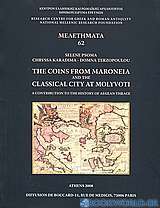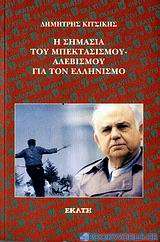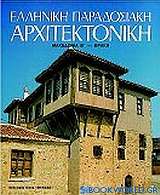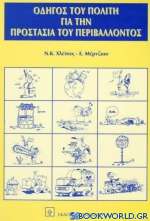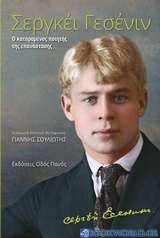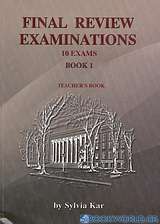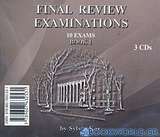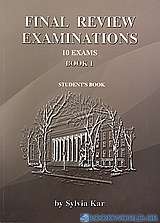The Coins from Maroneia and the Classical City at Molyvoti
Compared with the showy and carefully selected silver and gold coins that typically represent Greek coinage inmost book illustrations and museum displays, coins recovered in archaeological excavations can be difficult to appreciate. By their very nature, excavation coins are unselected. Almost all are made of bronze, a metal that readily corrodes when buried in the ground. Apart from any damage by corrosion, many are heavily worn or broken. Because they were often lost and have been recovered in huge numbers, they can be extremely repetitive. And yet, while this might make them tedious from a museum or connoisseur's point of view, for the ancient historian the very quantity of such data is a rare blessing. Their abundance and the even more important criterion of provenience -the circumstance that every excavated coin was used at a particular site and so is tied in some way to the site's imperfectly known history- make these coins an invaluable documentary source for the history of the habitation in question.
Nevertheless, despite a century and a half of extensive archaeological activity in Greece, it is disappointing how few of the country's excavations have produced published numismatic reports. A recent survey of Greek coins found in archaeological excavations lists only nine ancient cities and sanctuaries in Greece for which there exists a published account of excavated coins. Moreover, all but one of these records pertain to excavations that were run by foreign archaeologists and published by foreign scholars. The shining exception was Zone, a little known urban site on the Aegean coast of Thrace that was excavated under the auspices of the Greek Archaeological Society and whose coins were summarily listed and reviewed in a 1996 article by Mina Galani-Krikou. A third of these 2.229 coins are the critically important coins of Zone that made possible the site's very identification.
In the present volume Selene Psoma of the Research Centre for Greek and Roman Antiquity (National Hellenic Research Foundation), Chryssa Karadima and Domna Terzopoulou of the XIX Ephorate of Prehistoric and Classical Antiquities (Ministry of Culture) now give us not only a welcome second publication of site coins excavated in Aegean Thrace but one in extended monograph form with commentaries and full attention to numismatic detail. Notably, the study treats the coins from two sites, one that has long been recognized as Maroneia, the other a previously unidentified city site on Cape Molyvoti. [...]
(from the preface)
| Τίτλος βιβλίου: | The Coins from Maroneia and the Classical City at Molyvoti |
|---|
| Υπότιτλος βιβλίου: | A Contribution to the History of Aegean Thrace |
|---|
| Εκδότης: | Εθνικό Ίδρυμα Ερευνών (Ε.Ι.Ε.). Ινστιτούτο Ελληνικής και Ρωμαϊκής Αρχαιότητας |
|---|
| Συντελεστές βιβλίου: | Τερζοπούλου, Δόμνα (Συγγραφέας)
Καραδήμα, Χρύσα (Συγγραφέας)
Ψωμά, Σελήνη (Συγγραφέας)
Συλλογικό έργο (Συγγραφέας)
|
|---|
| ISBN: | 9789607905482 | Εξώφυλλο βιβλίου: | Μαλακό |
|---|
| Σειρά εκδότη: | Μελετήματα | Σελίδες: | 437 |
|---|
| Στοιχεία έκδοσης: | 2008 | Διαστάσεις: | 28x21 |
|---|
| Κατηγορίες: | Επιστήμες > Επιστήμες του Ανθρώπου > Οικονομία
Ιστορία > Αρχαιολογία |
|---|
Κατσούγκρη Αναστασία Ι.
Η Αναστασία Κατσούγκρη γεννήθηκε στην Αθήνα. Απόφοιτη του Π.Τ.Δ.Ε Αθήνας, Πτυχιούχος Ειδικής Αγωγής – ΕΚΠΑ με εξειδίκευση στα άτομα με κινητική αναπηρία. Έχει Πιστοποιητικό Εξειδίκευσης στις Μαθησιακές Δυσκολίες από το Πανεπιστήμιο Πατρών και είναι κάτοχος Μεταπτυχιακού Τίτλου Σπουδών «Τ.Π.Ε στην Εκπαίδευση» ΤΕΑΠΗ Αθήνας. Είναι υποψήφια Διδάκτωρ του Πανεπιστημίου Πατρών.
Συμμετέχει ως μέλος στην επιστημονική και ερευνητική ομάδα στάθμισης εργαλείων ανίχνευσης Μαθησιακών Δυσκολιών του Πανεπιστημίου Πατρών. Διετέλεσε Υπεύθυνη Ειδικής Αγωγής στην Περιφερειακή Δ/νση Αθήνας, από τον Ιούνιο του 2010 έως τον Σεπτέμβριο 2011. Είναι μέλος της Επιστημονικής Ομάδας και της Ομάδας Έργου του ΙΕΠ με τίτλο «Ανάπτυξη Υποστηρικτικών Δομών για την Ένταξη και Συμπερίληψη στην Εκπαίδευση των Μαθητών με Αναπηρία ή και Ειδικές Εκπαιδευτικές Ανάγκες - Μετατροπή του Ειδικού Σχολείου σε Κέντρο Υποστήριξης Ειδικής Αγωγής και Εκπαίδευσης». Στο πλαίσιο του παραπάνω έργου ΕΠΕΑΕΚ συνέγραψε για λογαριασμό του ΙΕΠ «Οδηγό Εξατομικευμένου Προγράμματος για μαθητές με Μαθησιακές Δυσκολίες» & «Οδηγό Εξατομικευμένου Προγράμματος για παιδιά με Αυτισμό». Έχει συμμετάσχει με εισηγήσεις της σε διεθνή και πανελλήνια επιστημονικά συνέδρια. Είναι επιμορφώτρια στα ΠΕΚ. Το 2013 κυκλοφόρησε από τις Εκδόσεις Ιβίσκος το παραμύθι της με τίτλο «Ο Οδυσσέας και η Καλυψώ ταξιδεύουν στο Χρόνο» και από τις Εκδόσεις Διηνεκές το βιβλίο της με τίτλο «ΜΜΕ & Αναπηρία Κοινωνικές Προκαταλήψεις και Στερεότυπα». Το παραμύθι «Ο Οδυσσέας και η Καλυψώ ταξιδεύουν στο Χρόνο» εκτός της συμβατικής έντυπης μορφής του είναι επιπλέον διαθέσιμο από το ΚΕΑΤ και στη γραφή Braille για τυφλά παιδιά. Το 2017 κυκλοφόρησε το βιβλίο της για τον Αυτισμό με τίτλο «Εκπαιδεύοντας ένα παιδί με Αυτισμό στην οικογένεια και το Τυπικό Σχολείο» από τις εκδόσεις Συμμετρία και 2η έκδοση από την Ελληνοεκδοτική.
Από το 2011 είναι Διευθύντρια σε Σχολικές Μονάδες Δημοτικής Εκπαίδευσης.
Έχει βραβευτεί από τον Πρόεδρο της Δημοκρατίας, Προκόπη Παυλόπουλο το 2019 για το Πρόγραμμα της Συνεκπαίδευσης που υλοποίησε το Δημοτικό Σχολείο Πολυδενδρίου στο οποίο είναι Διευθύντρια με το Ειδικό Δημοτικό Σχολείο Τυφλών Καλλιθέας.
Τον Νοέμβριο του 2020 πήρε μέρος σε Διεθνή Διαγωνισμό που διοργάνωσε η εταιρεία BIC με εκπαιδευτικούς από πολλά κράτη και ανακηρύχθηκε μία από τις 10 κορυφαίες εκπαιδευτικούς στον κόσμο.
(Πηγή: "Εκδόσεις Ιβίσκος", 2023)
